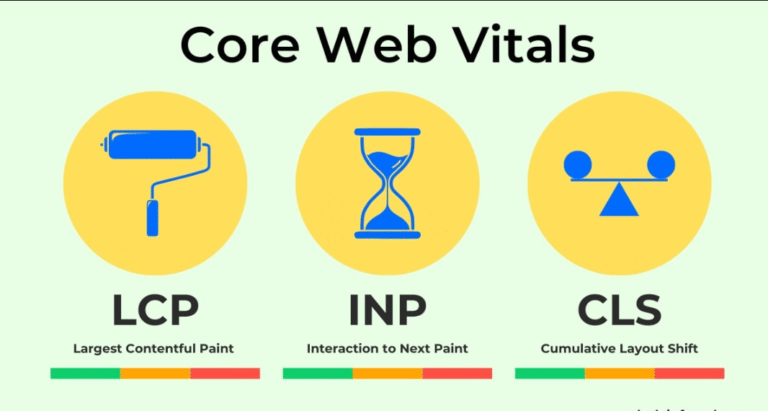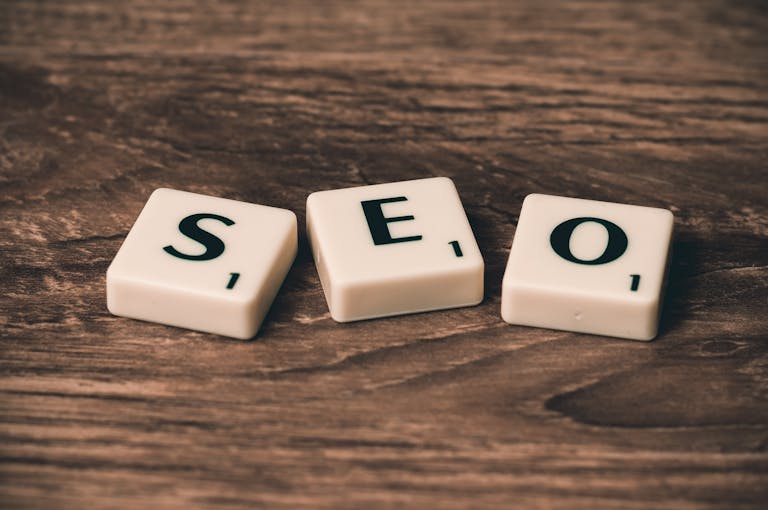The Ultimate Guide to Local SEO: Boost Your Business’s Online Presence
Introduction: Why Local SEO is Crucial for Businesses
In the digital marketing landscape, Local SEO has emerged as a powerful tool for businesses looking to connect with nearby customers. Local SEO helps improve a business’s visibility for geographically-related searches, making it an essential strategy for companies targeting specific locations or providing services in a particular area. Whether you own a restaurant, a retail shop, or a professional service business, optimizing for local search can drive more foot traffic and increase sales.
Unlike traditional SEO, which focuses on optimizing for broader keywords, Local SEO zeroes in on queries with local intent, such as “dentist near me” or “best pizza in [city name].” This article will explore comprehensive strategies and techniques to help your business rank higher in local searches, outperform competitors, and attract more customers.
What is Local SEO?
Local SEO is the process of optimizing your online presence to attract more business from relevant local searches. These searches typically have a geographical component, like city names or phrases like “near me.” Local SEO optimization includes:
- Creating and optimizing a Google Business Profile (previously Google My Business).
- Building local citations (mentions of your business’s name, address, and phone number across directories and websites).
- Earning positive online reviews.
- Optimizing your website’s on-page elements for local keywords.
The goal is to make your business visible in what is known as the Local Pack—the list of three businesses that appear at the top of Google search results when users perform local searches.
Why is Local SEO Important for Small Businesses?
Local SEO is crucial for any business that wants to be found by potential customers in its vicinity. Here’s why:
- 46% of all Google searches are seeking local information.
- 76% of people who search for something nearby visit a business within 24 hours.
- 28% of local searches result in a purchase.
By optimizing your online presence for local searches, you are positioning your business to be discovered by high-intent customers who are ready to take action.
1. Optimizing Your Google Business Profile
A well-optimized Google Business Profile (GBP) is the cornerstone of Local SEO. It not only helps your business appear in local searches but also provides customers with vital information like your address, phone number, and business hours.
Key Steps to Optimize Your Google Business Profile:
- Claim and verify your listing: Start by claiming your Google Business Profile and verifying your business information.
- Complete your profile: Fill out all the fields, including your business category, services, and a detailed description of your offerings.
- Include high-quality images: Upload photos of your storefront, interior, products, and team members. Businesses with photos receive 42% more requests for directions.
- Respond to reviews: Regularly engage with customer reviews, thanking those who leave positive feedback and addressing any concerns in negative reviews.
2. Using Local Keywords in Your Content Strategy
Local keywords are search terms that include location-specific phrases. For instance, instead of using the generic keyword “SEO services,” a local keyword would be “SEO services in New York.”
Tips for Local Keyword Optimization:
- Use keyword research tools like Ahrefs or SEMrush to identify high-value local keywords.
- Create locally-relevant content, such as blog posts or landing pages that address local events, news, or community interests.
- Include city or region names in your meta descriptions, title tags, and throughout your website’s content.
For example, if you run a bakery in Austin, Texas, you should use keywords like “best bakery in Austin,” “Austin cupcakes,” or “wedding cakes in Austin.”
3. Building Local Citations
Local citations are online mentions of your business name, address, and phone number (NAP) on websites, directories, and social platforms. These citations help Google validate your business’s existence and relevance in a specific area.
Where to Build Local Citations:
- General directories like Yelp, Yellow Pages, and Bing Places.
- Industry-specific directories (e.g., Zomato for restaurants).
- Local business directories for your city or region.
Make sure your NAP information is consistent across all these listings, as inconsistencies can confuse search engines and harm your local rankings.
4. Generating and Managing Online Reviews
Reviews are a critical component of Local SEO. Positive reviews build trust and influence customer decisions, while also serving as a ranking factor for Google’s Local Pack.
Strategies to Get More Reviews:
- Ask for reviews: Encourage satisfied customers to leave feedback on your Google Business Profile, Yelp, or Facebook.
- Respond to every review: Acknowledging both positive and negative reviews shows customers (and Google) that you value feedback.
- Use review management tools like BrightLocal or Podium to automate review requests and track responses.
5. On-Page Optimization for Local SEO
Optimizing your website for local SEO involves tweaking elements like your meta tags, headers, and content to include local keywords. Additionally, consider the following:
- Create dedicated location pages: If your business has multiple locations, create separate pages for each with unique content.
- Add structured data markup: Use schema markup (LocalBusiness schema) to provide search engines with more context about your business.
6. Leveraging Local Link Building
Backlinks from local websites can significantly boost your local SEO efforts. They signal to search engines that your business is relevant to the local community.
Ideas for Local Link Building:
- Sponsor local events or charities and get a backlink from their website.
- Participate in local business associations and be listed in their online directories.
- Collaborate with local influencers to promote your products or services.
7. Utilizing Local Content Marketing
Content marketing isn’t just for broad SEO—it can also be a powerful tool for local SEO. Focus on creating content that resonates with your local audience.
Content Ideas for Local SEO:
- Local guides and resources: Create content like “The Ultimate Guide to Restaurants in [City]” or “Top Things to Do in [Neighborhood].”
- Spotlight local events: Write blog posts or create videos covering local events, festivals, or charity drives.
- Interview local leaders or influencers: Featuring community members can help attract a local audience and earn backlinks.
8. Mobile Optimization and Local SEO
A significant number of local searches are conducted on mobile devices. Make sure your website is mobile-friendly to cater to these users.
Mobile Optimization Checklist:
- Responsive design: Ensure your site adapts to various screen sizes.
- Click-to-call buttons: Make it easy for mobile users to contact your business.
- Fast loading speed: Use tools like Google’s PageSpeed Insights to identify and fix performance issues.
9. Tracking and Measuring Local SEO Performance
To gauge the success of your local SEO strategy, it’s essential to track your performance using tools like:
- Google Analytics: Monitor your local traffic and user behavior.
- Google Search Console: Track local keyword performance.
- Local SEO tools like Moz Local and BrightLocal: Measure your visibility and citations.
10. Common Local SEO Mistakes to Avoid
Even the best strategies can fall short if common mistakes are made. Avoid these pitfalls:
- Inconsistent NAP information: Ensure your business name, address, and phone number are the same across all platforms.
- Ignoring negative reviews: Unaddressed negative reviews can harm your reputation.
- Keyword stuffing: Focus on creating valuable content instead of cramming in too many local keywords.
Frequently Asked Questions (FAQs)
- What is the difference between traditional SEO and Local SEO?
Traditional SEO focuses on improving a website’s visibility on a national or global level, while Local SEO is aimed at enhancing a business’s presence in local searches. - How long does it take to see results from Local SEO?
Local SEO can take anywhere from 3 to 6 months, depending on the competition and the quality of your optimization efforts. - What are the key factors for ranking in the Google Local Pack?
Key factors include having a well-optimized Google Business Profile, positive online reviews, and consistent NAP information across directories. - Is it necessary to have a physical location for Local SEO?
While a physical location helps, service-area businesses (e.g., plumbers, electricians) can still benefit from Local SEO by optimizing for the areas they serve. - How do I get more local backlinks?
You can build local backlinks by engaging with community websites, sponsoring local events, and getting listed in local business directories. - What tools are recommended for Local SEO?
Tools like Moz Local, Ahrefs, BrightLocal, and Google My Business Insights are excellent for managing and tracking local SEO performance.

Conclusion: Strengthening Your Local SEO Strategy
Local SEO is a critical part of any business’s digital marketing strategy, especially for those targeting specific geographic regions. By optimizing your Google Business Profile, using local keywords, and generating positive reviews, you can significantly increase your visibility in local searches. Contact Us today, and let us help you gain a competitive edge in your local market.
Ref:
- Search Engine Journal: Local SEO – The Definitive Guide to Improve Your Local Search Rankings
- Ahrefs: Local SEO – The Complete Guide
- Semrush: What is Local SEO? How to Do It + Strategies for 2024
- Search Engine Journal: Citations & Local SEO – The Ultimate Beginner’s Guide







